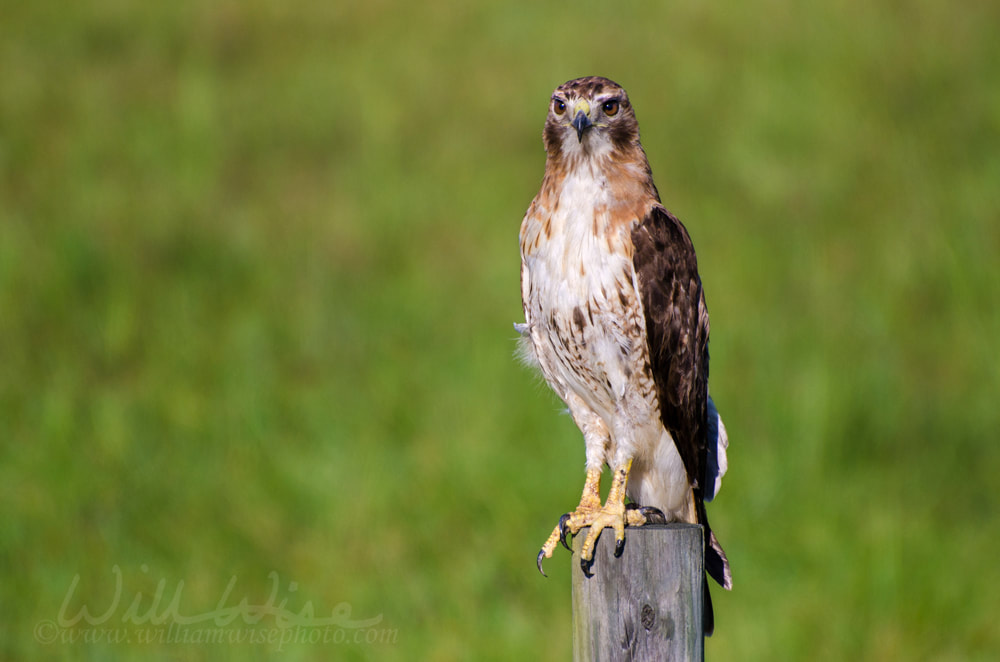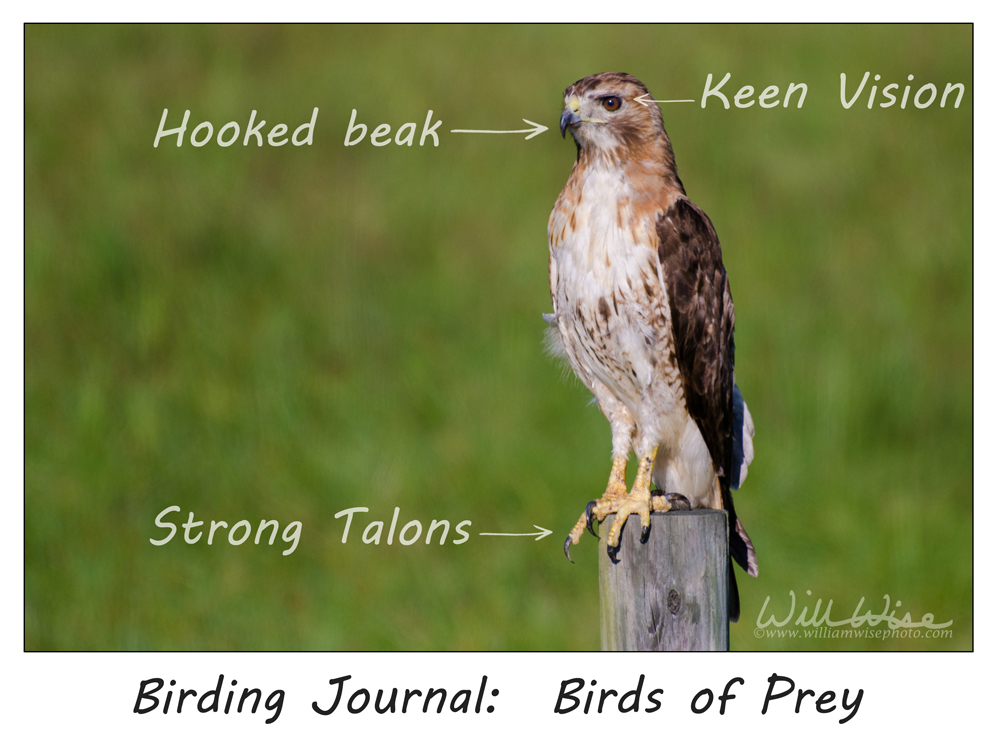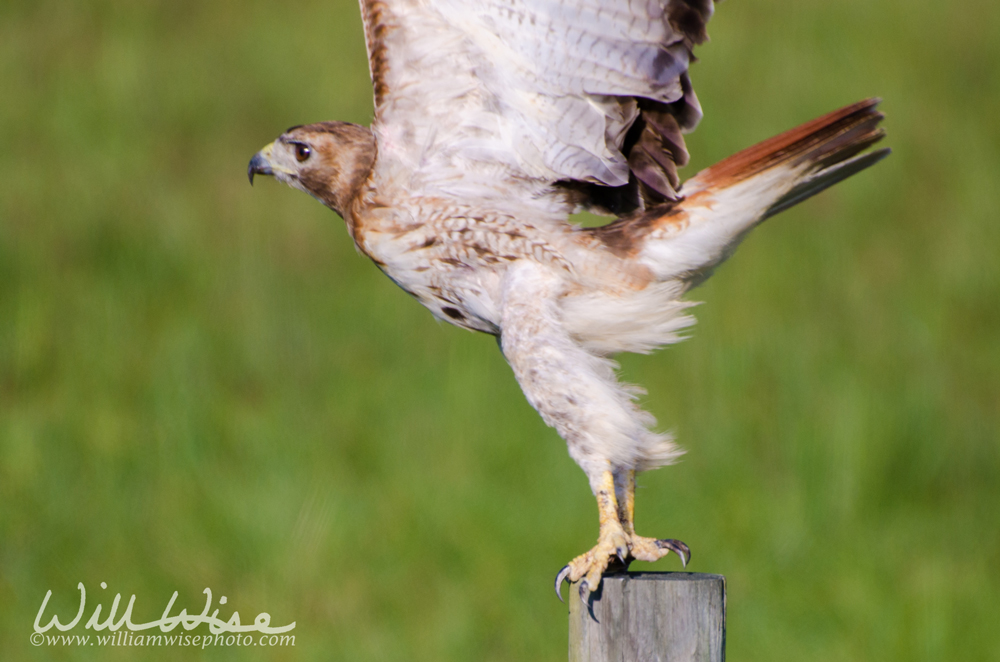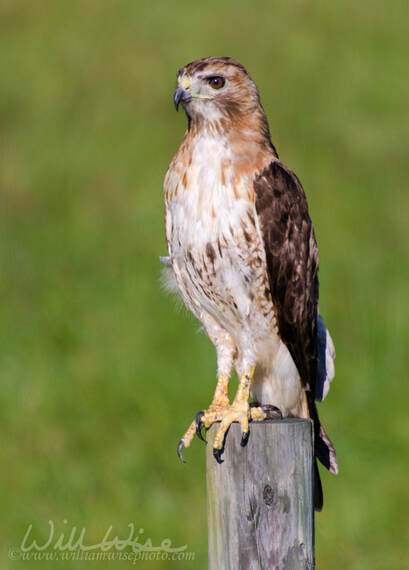|
Thursday, 5:41 PM - There is an advantage to being ready. On my typical drive home, this beautiful Red-tailed Hawk was perfectly posed on a pasture fence, but only momentarily. Since my camera was lying ready on the passenger seat, all I had to do was slow down, put down the window and fire away. These amazing raptors are always ready. Their lives depend upon being prepared to take every opportunity to seize their prey. To succeed and survive, they have been equipped with keen eyesight to spot even the smallest rodent scurrying in the brush; their strong talons are ever quick to “snatch up” (the linguistic origin of the name raptor) that prey; and their hooked beak ensures the meal does not escape. They are ever at the ready. Rarely do critters sit and patiently wait for me to get their photo. I have learned to be ready to get the shot before they fly or scurry off. I try to follow a few "Readiness Rules" I’ve set for myself:
Readiness Rule #1 - My camera rides shotgun. You can’t take a photograph without a camera; and not only must it be with you, it must be accessible. I learned the hard way by missing an awesome coyote shot because my camera was closed in a bag sitting in the back seat. Readiness Rule #2 – the right lens is on the camera. I swap lenses throughout the day depending upon what I am shooting (35 mm fixed lens for shooting in the kennel; 50 mm fixed lens for dog portrait shots; 40 mm macro lens for cat studio portraits; 18-105 mm lens for general around-the-house family photos). So, when I get in the truck (or go for a hike), I make sure my camera is already fitted with my 70-300 mm zoom lens. Readiness Rule #3 – the lens cap is always off. There is nothing more frustrating than raising my lens to shoot a bird that is actively flying off only to see black through the viewfinder. I’ve found the lens hood and some mindful handling is protection enough and replacing the lens cap after each shot isn’t really necessary. Readiness Rule #4 - the right aperture and shutter speed settings are already selected. Most of the workday my camera is set to capture low-light shots of dogs in their kennels. But these settings won’t work for the outdoor wildlife shots. So when I step outdoors, I double check my settings. What are the settings I prefer for outdoor wildlife shots? At a minimum:
Being ready has its advantages. For a raptor, being ready means survive or starve. For a photographer, it is capturing a shot or dealing with disappointment. Barnett Shoals Road, Athens-Clarke County, Georgia
0 Comments
Your comment will be posted after it is approved.
Leave a Reply. |
Categories
All
Archives
September 2025
|
|
All content is ©williamwisephoto.com. Please don't steal images. My images are available at dreamstime.com. Stock sales go into the shelter photography program.
|
In December 1993 I came to know the Designer and Creator of this wonderful planet and its creatures: Jesus Christ.
|
Donations help support the animal shelter adoption photography equipment and adoption website hosting and domain fees. Thanks for your support!
|






